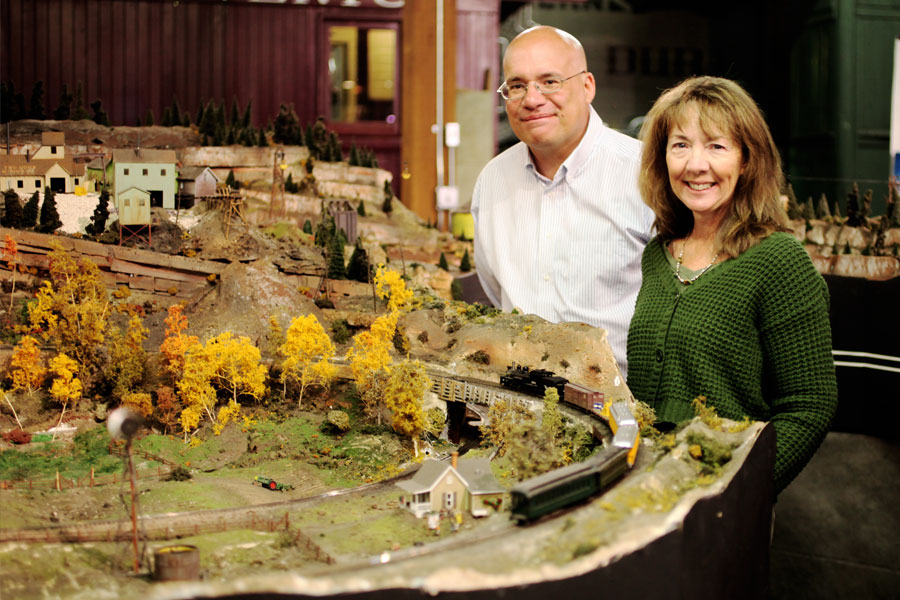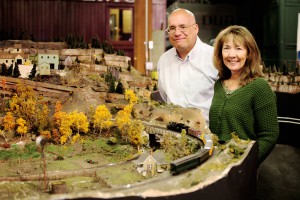
Keeping it real for model railroaders: SoundTraxx
 An electronic design engineer and model train enthusiast, Steve Dominguez began creating light and sound systems for his trains in the late 1980s. What started as a hobby evolved into SoundTraxx, a Durango, Colorado-based company that now generates $5 million in annual revenue with about 30 employees.
An electronic design engineer and model train enthusiast, Steve Dominguez began creating light and sound systems for his trains in the late 1980s. What started as a hobby evolved into SoundTraxx, a Durango, Colorado-based company that now generates $5 million in annual revenue with about 30 employees.
The company serves a niche market, but there’s still quite a bit of competition, and SoundTraxx stands out for its innovative muscle. The company has chalked up a number of industry firsts, including the introduction of:
A sound and throttle system with wireless control.
A digital sound system with “playable” whistles that allows model railroaders to control the duration of sound effects.
A surround-sound system for multiple trains. Using a proprietary algorithm, the system continuously adjusts hidden speakers in the train layout so sound appears to seamlessly follow trains as they travel around the track.
SoundTraxx’s products are built on a robotic assembly line in its Durango facility, which gives the company greater quality control than competitors who manufacture offshore. Another important hallmark is authenticity. Instead of using generic noises, SoundTraxx’s staff travels around the country to record sounds of specific locomotives.
“Our customers are very detailed focused. If they have a Santa Fe F7 diesel locomotive, they want a sound just like it,” Dominguez explains.
Once onsite, his staff spends entire days recording sounds of real-world steam and diesel locomotives. They also try to record the locomotive moving with the rest of the train in order to replicate its engine working under a load. These detailed recording sessions result in more than 20 different sound effects, including the motor, bell, whistle, engine exhaust, brakes, couplers — even the sound of the fireman shoveling coal into the firebox.
In contrast, other companies make only a few recordings — or borrow them from a video or other source — and rely heavily on the editing process to create their sounds effects. “To a layperson, the edited sound might capture the general feeling of whatever it claims to represent, but to an enthusiast who is familiar with the prototypes, it will be all wrong,” Dominguez says.
SoundTraxx initially distributed its products through hobby shops, and consumers would then install the decoders on their locomotives. In 2009, however, the company began working with model train manufacturers to embed SoundTraxx decoders in their products for a turnkey solution — and this new channel has doubled SoundTraxx’s sales in the past five years. Most recently growth has been sparked by expanding beyond the U.S. market to create sound systems of English and Japanese trains, and by 2019 Dominguez hopes to double annual revenue to $10 million.
With that in mind, Dominguez is building a new 20,000-square-foot facility, which will more than triple SoundTraxx’s current space. “The additional elbowroom will help us be more efficient with manufacturing processes,” he says. “It will also enable our engineering staff (currently located in a separate building two blocks away) to be closer to production. We have a lot of irons in the fire with new products, so we want to get everyone under the same roof.”
 In addition to making greater capital investments, moving into second stage has enabled Dominguez to bring on more talent. “For many years, except for a support crew, it was just me and my business partner,” he says referring to co-founder Nancy Workman, whom he met when they both worked for a marine electronics company. Today SoundTraxx’s staff is comprised of engineers, technical writers, production managers and salespeople.
In addition to making greater capital investments, moving into second stage has enabled Dominguez to bring on more talent. “For many years, except for a support crew, it was just me and my business partner,” he says referring to co-founder Nancy Workman, whom he met when they both worked for a marine electronics company. Today SoundTraxx’s staff is comprised of engineers, technical writers, production managers and salespeople.
“Durango is a tourist town, and most of the jobs here are minimum wage,” Dominguez observes. “Although we’re not adding dozens of new jobs at once, the ones we do create have higher-paying salaries, which is one way I think we’re contributing back to the community.”